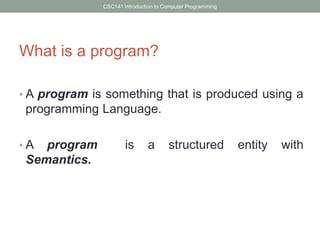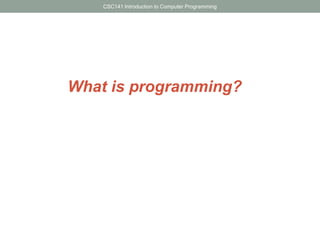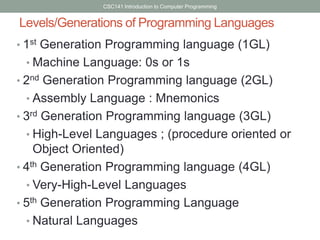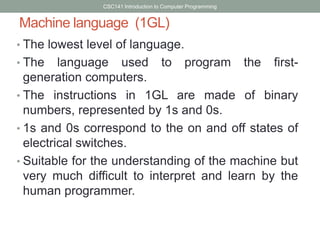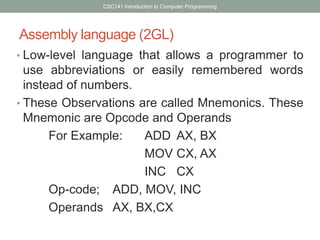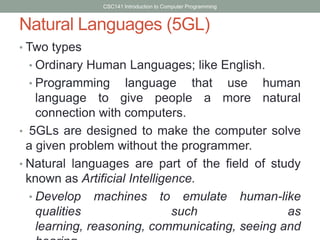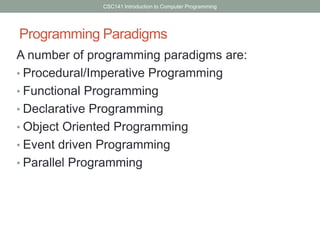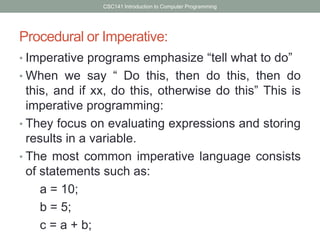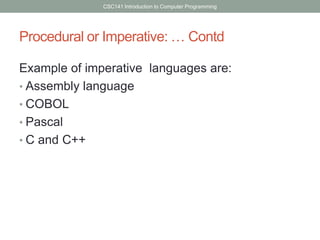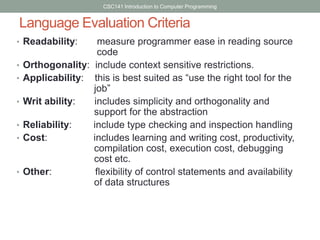The document provides an overview of programming languages, defining a programming language as a system for human-machine interaction and explaining the different generations of programming languages from machine language to natural languages. It discusses the nature of programming as a science, skill, engineering, and art, along with various programming paradigms and evaluation criteria. Additionally, it contains a brief history of the C programming language, highlighting its development and significance in computer programming.


